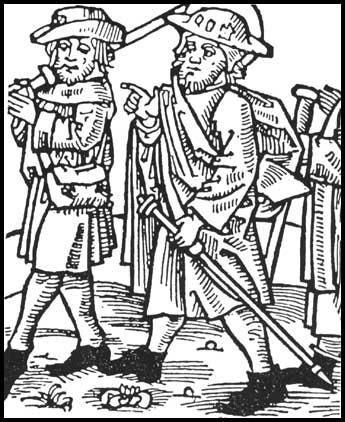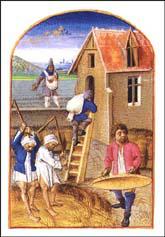The Medieval Pilgrimage
In the Middle Ages the Church encouraged people to make pilgrimages to special holy places called shrines. It was believed that if you prayed at these shrines you might be forgiven for your sins and have more chance of going to heaven. Others went to shrines hoping to be cured from an illness they were suffering from.
An important shrine was at Walsingham in Norfolk where there was a sealed glass jar that was said to contain the milk of the Virgin Mary. At other shrines people went to see the teeth, bones, shoes, combs, etc., that were said to have once belonged to important Christian saints. The most common relics at these shrines were nails and pieces of wood that the keepers of the shrine claimed came from the cross used to crucify Jesus.
When people arrived at the shrine they would pay money to be allowed to look at these holy relics. In some cases pilgrims were even allowed to touch and kiss them. The keeper of the shrine would also give the pilgrim a metal badge that had been stamped with the symbol of the shrine. These badges were then fixed to the pilgrim's hat so that people would know they had visited the shrine.
Some people went on pilgrimages abroad. In Palestine, for example, it was possible to visit a cave that was supposed to contain the beds of Adam and Eve and a pillar of salt that had once been Lot's wife.
Travelling on long journeys in the Middle Ages was a dangerous activity. Pilgrims often went in groups to protect themselves against outlaws.


